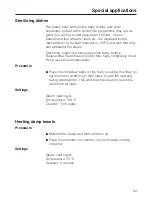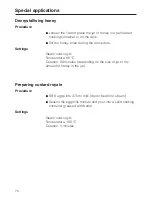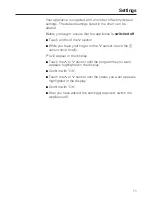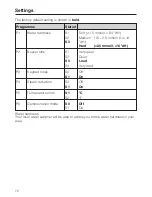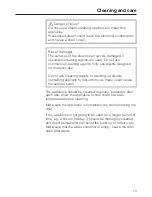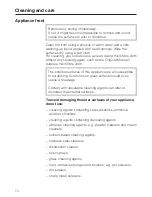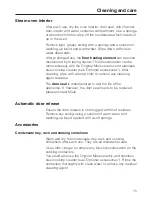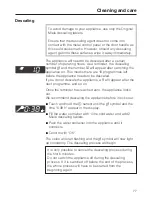
Making yoghurt
To prepare yoghurt, you will need milk and live culture or
yoghurt starter powder, e.g. from a health food store.
Use natural yoghurt with live culture and without additives. Do
not use heat-treated yoghurt.
The yoghurt must be fresh (short storage time).
You can use either unchilled long-life milk or fresh milk.
Long-life milk can be used without being further treated.
Fresh milk must be heated to 90 °C (not boiled) and then
allowed to cool down to 35 °C. Using fresh milk will make the
yoghurt firmer than if long-life milk was used.
The yoghurt and milk should have the same percentage fat.
Do not move or shake the jars while the yoghurt is fermenting.
After preparing the yoghurt, it must be immediately placed in
the refrigerator to cool down.
The firmness, fat content and cultures used in the yoghurt
starter all affect the consistency of homemade yoghurt. Not
all yoghurts are equally suitable as yoghurt starters.
Possible causes for poor results
Yoghurt is not set:
Incorrect storage of the yoghurt starter, too much time out of
the refrigerator, packaging was damaged, milk was
insufficiently heated.
Liquid has not been removed:
Jars were moved, the yoghurt cooled down too slowly.
Yoghurt is grainy:
The milk was heated too high, it was not free of imperfections,
the milk and yoghurt starter were not stirred evenly.
Special applications
62
Summary of Contents for DG 6100
Page 97: ...97 ...
Page 98: ...98 ...
Page 99: ...99 ...
Page 100: ...M Nr 09 651 660 05 en AU NZ DG 6100 DG 6200 ...






















